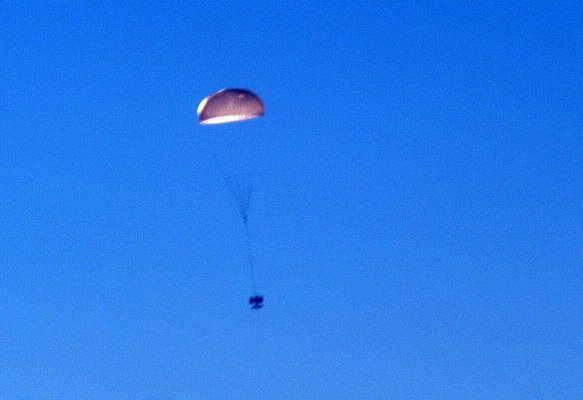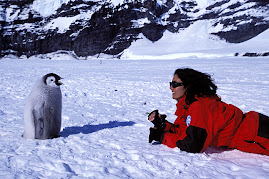
Press Release 07-189
NATIONAL SCIENCE FOUNDATION
December 21, 2007
A National Science Foundation (NSF)-chartered aircraft operating in Antarctica crashed shortly after take-off earlier this week while providing support to a group of researchers at a remote location on the southernmost continent. None of the 10 people aboard was injured, but the DC-3 Basler was severely damaged.
The aircraft, which is owned by Kenn Borek Air Ltd., a Canadian aviation firm, experienced difficulties in taking off from a field site near Mt. Patterson in West Antarctica on the morning of Dec. 20, local time (U.S. stations in Antarctica keep New Zealand time), roughly 550 miles from McMurdo Station, NSF's logistical hub in Antarctica.
The six passengers aboard the plane were part of the NSF-funded portion of the international Polar Earth Observatory Network (POLENET) project, which is deploying GPS units and seismic sensors across Antarctica to make observations that are vital to understanding how the massive ice sheets are changing. In turn, these measurements are critical to understanding how ice sheets affect sea level worldwide, and thereby global climate in general.
The POLENET team and four aircraft crewmembers were flown back to McMurdo Station.
As a matter of routine, the incident is under investigation by the Department of the Interior's Aircraft Management Division (AMD). NSF has a memorandum of agreement with the Interior Department to conduct such investigations. As the managing federal agency for the U.S. Antarctic Program, NSF coordinates and supports all U.S. scientific research on the southernmost continent and in surrounding waters.
AMD has contacted the National Transportation Safety Board (NTSB) about the incident. The NTSB will coordinate as necessary with the Transportation Safety Board of Canada.
Because the cause of the accident is under investigation, NSF will have no further comment, pending the conclusion of that investigation.
PHOTO CREDIT: Dominick Dirksen/National Science Foundation (January 2007)
Media Contacts
Peter West, NSF (703) 292-7761 pwest@nsf.gov
____________________________________________________________________
The National Science Foundation (NSF) just awarded the collaboration, called POLENET, $4.5 million to plant global positioning system (GPS) trackers and seismic sensors on the bedrock that cradles the West Antarctic Ice Sheet (WAIS). Lead institution Ohio State University will receive more than $2.2 million, and the rest will be divided among partners in the United States as part of an International Polar Year project.
As scientists have tried to understand how climate change is affecting the WAIS, they have long wished they could gather information from the entire region, explained POLENET leader Terry Wilson. But Antarctica contains the coldest and windiest sites on the planet -- locations inhospitable to scientific instruments and the scientists who would deploy them.
In a presentation Tuesday, December 11, 2007 at the American Geophysical Union meeting in San Francisco , she described how her team will overcome the harsh environment. They'll fly ski-equipped aircraft to remote locations, and plant rugged instruments that will send signals back to the United States via satellite.
“We'll be able to do systems-scale science in Antarctica . That wasn't possible before,” said Wilson, associate professor of earth sciences at Ohio State. “This instrumentation is designed to run and record data year-round, through the dark polar night. Previous instrument deployments have largely operated only for a few months, or less, each year. This allows us to do new science.”
In a related project over the summer of 2007, POLENET scientists installed two dozen GPS trackers in Greenland. By the end of February 2008, the scientists plan to have 17 new trackers installed around the WAIS, along with about 11 new seismic sensors. The first expeditions began arriving in Antarctica early in December, 2007. The network will be complete in 2010 and will record data into 2012. Selected sites may remain as a permanent Antarctic observational network.
Scientists around the world will be able to access POLENET data online, and schools will be able to access educational resources.
Source: OHIO State University, The Washington Post



















